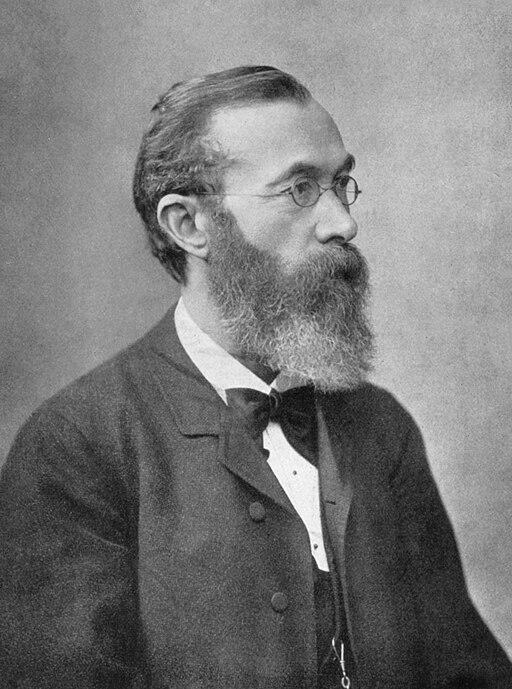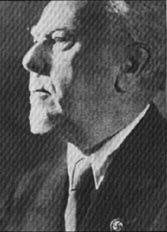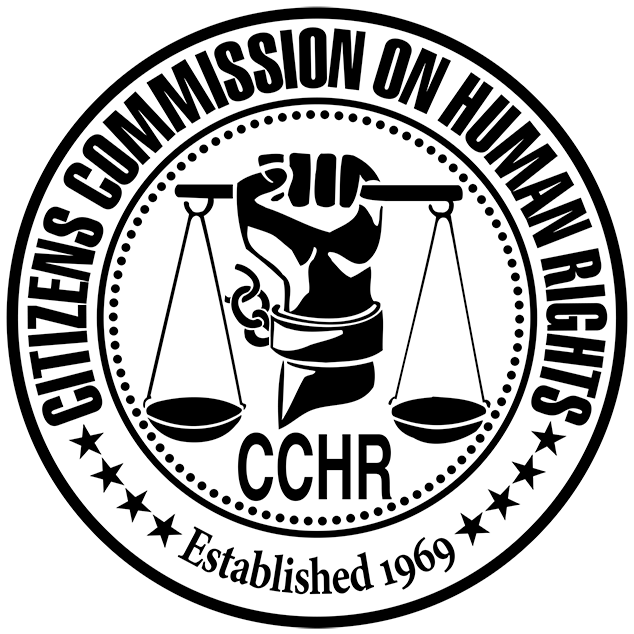International Holocaust Remembrance Day is January 27. Psychiatrists’ key role in conceiving and administering mass murder should not be ignored.
While not the first genocide in history, the Holocaust was unique because it was physicians in Germany who took the lead in the design and implementation of programs to murder human beings, according to a leading medical journal. The mass murder of the Holocaust was intended to exterminate the Jewish population in Europe and ultimately claimed the lives of some 6 million Jews.
But while the American Medical Association Journal of Ethics recently devoted an entire issue to the Holocaust and its implications for today’s doctors, none of the articles pointed out that the key “physicians” behind the sterilization and mass murder of millions of people were, in fact, psychiatrists.
In a speech in 2010, Dr. Frank Schneider, psychiatrist and then-president of the German Association of Psychiatry and Psychotherapy (DGPPN), addressed a convention of psychiatrists and publicly confessed the human rights abuses and crimes against humanity of psychiatrists during the Nazi era from 1933 to 1945.
In the words of Schneider: “Under National Socialism [the Nazi regime in Germany], psychiatrists showed contempt for their fellow man. They lied to and deceived the patients in their care and their families. They forced them to be sterilized, arranged their deaths and even performed killings themselves. …I must offer our sincerest apologies – albeit late – to all the victims and their families who suffered such injustice at the hands of the German associations and their psychiatrists.”
“Psychiatrists showed contempt for their fellow man. They lied to the patients in their care. They forced them to be sterilized, arranged their deaths and even performed killings themselves.”
– Psychiatrist Frank Schneider, President, German Association of Psychiatry
Psychiatry was born in Germany, where caretakers in insane asylums wanted to be considered part of the medical field. In 1808, German psychiatrist Johann Christian Reil coined the medical-sounding name “psychiatry,” from the Greek words for soul and doctor. But rather than calming the soul of the distressed, Reil treated his patients with pain to control them.
“Through strong, painful impressions we capture the patient’s attention and accustom him to unconditional obedience,” he wrote.
German historian and professor Hans-Walter Schmuhl says: “Reil’s statement is a good illustration of the prevailing treatment methods in psychiatry in the 19th and start of the 20th century because it dealt with manipulating human behavior. And they hurt their patients, made them sick with revulsion, made them afraid, subjected them to harsh punishment, all to make their ‘deviant’ behavior disappear.”
Also laying the groundwork for what was to come during the Nazi regime was a theory promoted and taught by influential German psychologist Wilhelm Wundt, who established the first institute of psychology in the world at the University of Leipzig in 1879. He contended that a human being was an animal without a soul, merely a stimulus-response mechanism whose behavior could be molded and controlled.

Concurrently, British psychologist Francis Galton in 1883 created eugenics, which would have a profound effect on psychiatry. Eugenics was the theory that only the healthy and strong should have children, while all others should be prevented. The theory spread worldwide, including in the United States, where laws allowing sterilization were passed.
One of Wundt’s students became an influential German eugenicist, psychiatrist Emil Kraepelin, best known for his early classification of mental disorders. Kraepelin became a mentor to the Nazis.
“There is a direct line from Kraepelin and the German Research Institute of Psychiatry [he founded] to National Socialist [Nazi] psychiatry through [the Institute’s] genealogy department, which was headed by Ernst Rüdin,” says Schmuhl. “And Ernst Rüdin was the most important contact in the field of psychiatry for the Nazis. He was considered to be the leading genetic psychiatrist not just in Germany, but internationally.”
Psychiatrist Rüdin wrote: “The psychiatrist and healthy people must ally against the genetically [defective]… The psychiatrist must render his service in the furtherance of a hereditarily healthy, able and superior race.”

In 1905, Rüdin and German psychiatrist Alfred Ploetz, another influential German eugenicist, established the German Association of Racial Hygiene. Ploetz had already published the 1895 book, The Fitness of Our Race and the Protection of the Weak, in which he proposed the regulation of reproduction and the elimination of sick and weak children.
This idea was advanced by psychiatrist Alfred Erich Hoche. As Schneider of the DGPPN put it in his 2010 speech: “In 1920, psychiatrist Alfred Erich Hoche published the book Freedom to Destroy Life Unworthy of Living in collaboration with lawyer Karl Binding. In it, he coined the term ‘human dead weight’ and drew up a list of allegedly incurable mental illnesses which he called ‘states of mental death.’ This provided the basis for the call for ‘Death to life unworthy of life!’ published in 1930 in the National Socialist [Nazi] monthly bulletin.”
In his 1924 book Mein Kampf, Adolf Hitler himself praised eugenics as the solution to rebuilding his nation after World War I. He wrote, “He who is not healthy and worthy bodily or mentally is not allowed to perpetuate his malady in the body of his child… The right of personal freedom recedes before this duty to preserve the race.”
Six months after taking power, the Nazi party turned to Rüdin to lead the drafting of the 1933 Law for the Prevention of Genetically Diseased Offspring, which allowed the compulsory sterilization of any citizen who in the opinion of a genetic health court suffered from a list of alleged genetic disorders.
With this law, psychiatrists in Germany began the wholesale sterilization of its mental patients. In the next 12 years, some 400,000 German citizens would be forcibly sterilized, robbing them of their right to physical integrity and parenthood.
This passion for sterilization eventually led to euthanasia, or so-called “mercy killing.” Hitler issued a decree to start a euthanasia program – a decree that was later backdated to September 1, 1939, the date that Germany invaded Poland and World War II began.
The first to be killed were children. The killing of institutionalized children occurred in secret inside German asylums. One psychiatrist, Hermann Pfannmüller, is known to have starved hundreds of children to death in an asylum near Munich. The killing expanded when a secret government program set up a network of 30 more psychiatric child killing centers that murdered children with injections and gassing.
With further urging by psychiatrists, Hitler issued a secret decree in 1939 that allowed the euthanasia of mental patients of all ages. To carry out this decree, psychiatrists under Operation T4 converted six medical facilities to extermination centers with gas chambers to which psychiatrists from all over the country sent their patients. The Director in charge of T4 was psychiatrist Werner Heyde, a psychiatric adviser to the Gestapo.
Psychiatrists decided who was to be euthanized and who was not, based on the details on patient questionnaires sent in from mental institutions across the country.
A total of 70,273 psychiatric patients deemed unworthy of living were murdered between 1940 and 1941, when mounting public outrage forced the Nazi government to stop the T4 program.
“The public protests that eventually spelled the demise of the program did not come from the ranks of the psychiatric profession, but predominantly from the [Roman Catholic] Church,” admitted Schneider of the German Association of Psychiatry.
However, in spite of Hitler’s official order to stop, psychiatrists continued to euthanize, killing another 230,000 mental patients on their own.
Schneider concurred with the magnitude of the euthanasia: “T4 and the killings that took place once the program had officially ended claimed the lives of at least 250,000 to 300,000 mentally and physically disabled people.”

Irene Leitner is a German historian and director of the Castle Hartheim Memorial, site of one of the T4 killing centers. “The stop of Operation T4, however, did not mean a stop to the homicide. The murders of physically or mentally handicapped people continued,” she said.
“These indeed were continued no longer in the euthanasia institutions [killing centers], but locally in the mental institutions themselves, where the psychiatrists on duty and the head psychiatrists assumed leading roles in the ongoing killing of these people.”
When Hitler decided to move euthanasia into the concentration camps he had set up, he called on top German psychiatrists to get the job done.
According to Leitner: “All those who had held important positions here at Hartheim [killing center] later held prominent positions in extermination camps… The know-how that had been gained in the euthanasia institutions with the mass killing of people made its way into the extermination camps.”
In achieving the Nazi goal of “racial hygiene,” other races and groups were seen as a threat to the German race. The Holocaust was the attempt to annihilate the Jewish “race,” and the Nazis were well on their way to achieving it. Two out of every three Jews living in Europe before the war were killed in the Holocaust. More than one million of the six million victims were children.
In further genocide, the Nazis killed two million to three million Poles. Other groups designated for persecution, imprisonment, and death included Roma (Gypsies), people with disabilities, Soviet prisoners of war, Afro-Germans, political dissidents, Jehovah’s Witnesses, and those who engaged in what was considered socially deviant behavior.
January 27 is designated by the United Nations General Assembly as International Holocaust Remembrance Day to honor the six million Jewish victims of the Holocaust and the millions of other victims of Nazism.
Schneider ended his confessional speech this way: “Our shame and regret are also rooted in the fact that it has taken this association…70 years to make a systematic effort to come to terms with its past and the history of its predecessors [psychiatric organizations] under National Socialism, and…to ask for forgiveness from the victims of forced migration, forced sterilization, human experiments and murder.”
Some apologists say that the euthanasia was driven by a few rogue psychiatrists, but the program was conceived, organized and administered with the full cooperation and support of Germany’s most influential psychiatrists.
As historian Schmuhl put it: “You cannot say that there are only a few bad apples with psychiatry who did the Nazi’s bidding. It is a problem with the entire profession.”
In an editorial in the issue of the AMA Journal of Ethics dealing with the Holocaust, Tessa Chelouche, MD and Matthew K. Wynia, MD, MPH, wrote that “doctors in Germany were not, by and large, victims of the Nazi regime, nor were they merely complicit or even collaborators – they were leaders.” And these leading doctors were psychiatrists.
The editorial goes on to say, “Our profession’s involvement in providing the pseudoscientific foundations that supported ethnic and racial violence during the Second World War cannot be disentangled from the history of scientific racism and its ongoing, powerful, and pervasive influence on the world today.”
Psychiatry can still be viewed as ethically-challenged. Psychiatrists assign their patients mental disabilities based on subjective “diagnoses” that psychiatrists admit have no scientific validity. They have an enormous conflict of interest and potential for abuse in their largely unchecked power of involuntary commitment in psychiatric facilities where they are employed. They prescribe millions of Americans powerful, mind-altering psychotropic drugs on the unproven theory of a chemical imbalance in the brain and despite the growing number of research studies concluding the drugs do more harm than good and have substantial risks of serious withdrawal symptoms. They give electroshock treatments, though electroconvulsive therapy has never been proven either safe or effective.
More than seven decades after the end of the Holocaust, a full reckoning of psychiatric abuses of human rights has yet to occur.
